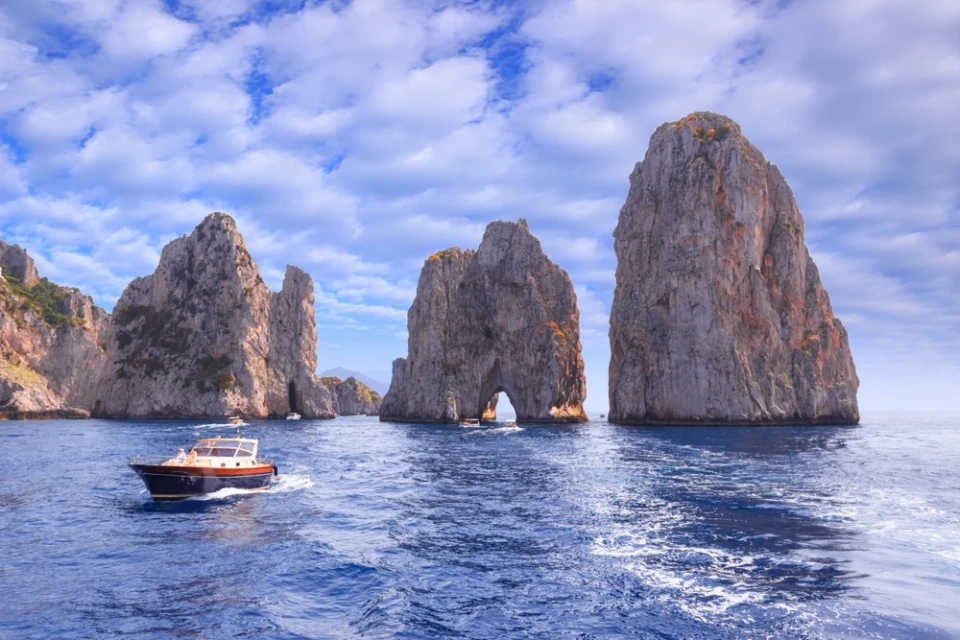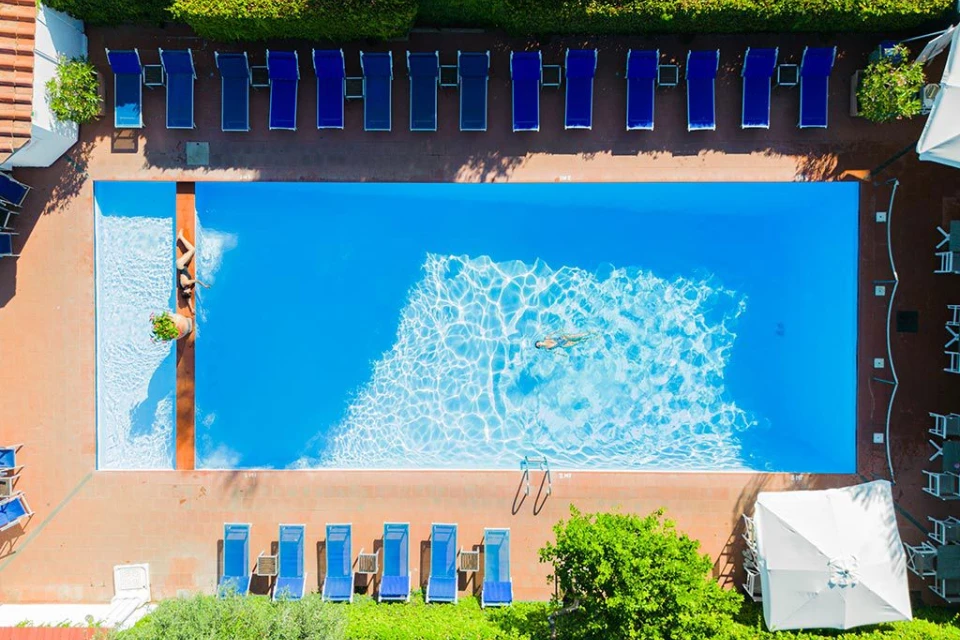Capri is that island - you know, the one dangling off the Amalfi Coast like a shiny earring that every fashion house suddenly decided they wanted to wear. Jacquemus threw a runway show here, brands have churned out “Capri-inspired” resort collections, restaurants migrate over in the summer just to say they did, and influencers can’t stop posting about their yacht-side Aperols. By the time you step off the ferry, you’ll get it - the cliffs are dramatic, the yachts are abundant, and yes, you’ll immediately wonder if your linen outfit is Instagram-worthy enough. But let’s get into what nobody tells you. Shoes First off: the shoes. Forget the delicate strappy sandals or that expensive pair you convinced yourself were “walking shoes.” You have never known stairs until you’ve set foot in Capri. I thought I was a seasoned Italy traveller - climbed the Roman hills, wandered through Tuscan towns, ticked off all the rustic alleyways. But Capri is in a league of its own. Thousands of steps. Everywhere. It’s beautiful, sure, but your quads will remember the trip longer than your camera roll. Funicular Then there’s the funicular - the charming little cable car that everyone takes up from the marina. The problem? The line feels like it’s auditioning for the Guinness World Records. What I wish I’d known: if you’re staying overnight, there’s a secret separate entrance for hotel guests. Flash your booking and skip the ordeal. We didn’t know, of course, and spent 40 minutes sweating our way up stairs instead. Privacy is everything Here’s the magic trick Capri somehow pulls off: being buzzing and quiet at the same time. We stayed in a villa smack in the middle of the busiest part of town - surrounded by glamorous pools, Michelin-starred dining, and every five-star hotel you’ve seen in Condé Nast Traveller, yet it felt secluded. Out on the terrace, you’d look across at the Faraglioni cliffs dotted with yachts and swear you were in your own private film set. Price Now, let’s talk numbers. Capri is expensive. And not “London pricey” or “Paris café inflation” expensive. We’re talking €40 for soup, €35 for a salad, and that’s before you’ve even ordered wine. Accommodation? Under €300 a night is basically unheard of, and that’s for the most modest of rooms. The ferry from Naples will set you back another €35 per person each way, and don’t expect to offset costs with a supermarket run - the ones that exist are tiny, understocked, and close early. So unless your budget stretches to multiple Aperol spritzes that cost more than dinner in Naples, consider making Capri a glamorous day trip instead of a full-blown stay. What to wear Capri isn’t the place to test out your tightest leather trousers or anything that requires complicated zips. It’s hot, it’s humid, and unless you’re staying poolside at a five-star, you’ll be climbing stairs that feel like a Peloton class in disguise. So think practical but make it chic. You’ll want a lightweight bag you can sling over your shoulder for shopping alley strolls or when you brave the Monte Solaro chairlift. Sunglasses are non-negotiable (the more dramatic, the better, it’s Capri after all), and shoes should be comfortable enough to handle uneven paths but stylish enough that you won’t hate yourself when you bump into someone from Vogue. To make things easier, I’ve pulled together a little style guide below with some of my favourites - pieces that balance glamour with the reality of sweat, stairs, and selfies. For her For him Where to stay Capri Tiberio Palace If Wes Anderson designed a dolce vita escape, it would look like this. Bursting with colour (we’re talking magenta sofas, turquoise walls, and enough vintage trinkets to fill a flea market), the Tiberio Palace is equal parts glamorous and fun. Book a sea-facing suite with a terrace and you’ll never want to leave. Food-wise, La Terrazza Tiberio does the kind of seafood pasta you’ll still be dreaming about when you’re back in rainy London, while the Jacky Bar is the place to sip a paloma under the gaze of a white baby grand piano. Caesar Augustus Hotel Perched dramatically on a cliff 300 metres above sea level, Caesar Augustus is where you go when you want views that make you question your entire life back home. It’s family-run, so while it’s grand, it’s also incredibly warm owner Paolo and his son might just greet you personally. Rooms in the main villa are the prize (yes, even the bathrooms come with a view). The chef cooks with ingredients picked straight from the hotel’s garden, and if you’re lucky you’ll be roped into a cooking class or a fish-market run. It’s all very wholesome in a “pinch-me-I’m-on-Capri” kind of way. Hotel La Palma Capri’s very first hotel got a major glow-up in 2023, and now it’s a dreamy neoclassical hangout where white curtains billow like togas and the crowd looks like they’ve just stepped off a private jet (they probably have). The rooms are all breezy whites and sky blues, and the pastry counter downstairs is run by a master chef. Upstairs, Michelin-starred Gennaro Esposito works his magic on the roof terrace. But the real flex? Scoring a spot at the hotel’s Da Gioia beach club because sun loungers on Capri are harder to book than a Birkin. Hotel La Vega Tucked into a candy-pink building, La Vega is the kind of hotel that doesn’t need to shout about itself. It’s family-run, understated, and has a hillside pool carved into the rock that’s basically begging for an Aperol shot (the drink, not the photo, though both work). The rooms are crisp whites with blue majolica tiles, and the private terraces are perfect for lazy breakfasts with a sea view. It’s not as flashy as some of its neighbours, but that’s exactly why people love it. J.K. Place Capri Hovering above Marina Grande, J.K. Place feels like a secret club for people who’ve outgrown the day-tripper chaos. The interiors are peak Michele Bonan: chic, polished, but never stiff. Think four-poster beds, wraparound terraces, and sunlight pouring in from every angle. Days here revolve around the pool, the terrace, and the chef’s modern spin on Mediterranean cooking (expect fish so fresh it practically swims onto the plate). Aperitivo hour here is legendary cocktails, views of Vesuvius, and that smug feeling you picked the right hotel. What to do There are a few Capri non-negotiables, and booking a boat is at the very top. Especially if you’re staying overnight, skip the TikTok-fed urge to queue for the Blue Grotto. It’s tourist bingo: hours of waiting for a five-minute ride that’s mostly bragging rights. Instead, splurge on a private boat. I did one with dinner at sunset, and it was the closest I’ve come to feeling like I was in an old Italian film. Our guide fed us stories of emperors, architects, and celebrities who once swanned about the cliffs, while the sea turned from powder blue to shades of orange, green, and red. Yes, it was a bit choppy, but bobbing past the Faraglioni at sunset while yachts hovered nearby was pure magic. Next up: the Monte Solaro chairlift. It’s a must, and honestly, half the fun is just getting there. Capri’s roads are so narrow and twisted you’d think they were designed by someone who hated cars. Which is why the island’s cabs look like squashed convertibles from another planet. Take one, it’s all part of the Capri experience. Leave the overcrowded buses to those with a masochistic streak. Shopping is another must. Wander the little lanes, duck into boutiques of Italian designers, and you’ll find pieces that somehow feel more special (and sometimes more affordable) than their London equivalents. Then, when you’re ready to slow down, stop by the Gardens of Augustus or stroll Via Krupp. They’re postcard-perfect, but you don’t need to tick every sight off a list. Capri is best enjoyed with a slow wander, a sea breeze, and the smug feeling that you’ve chosen the right kind of chaos to escape to. Where to eat La Fontelina If you do one meal in Capri, make it here. La Fontelina is basically the definition of Capri vibes: sunbeds perched under the Faraglioni rocks, impossibly chic crowds pretending not to notice each other, and seafood so fresh you’ll wonder if the lobster was sunbathing next to you five minutes earlier. Book ahead, both tables and loungers vanish faster than a spritz on a hot day. L’Olivo When flip-flops and pasta no longer cut it, head to L’Olivo at the Capri Palace Jumeirah. Two Michelin stars, a menu crafted by Andrea Migliaccio (a local hero from Ischia), and pasta that feels like edible poetry. The lemon-scented tagliolini with burrata, red prawns, and sea asparagus is the sort of dish you’ll dream about on the ferry home. Ristorante Panorama The name is no lie, the views here are spectacular. Panorama is known for its warm, attentive service (though occasionally you’ll wait a little longer than you’d like), and the seafood pasta is exactly what you want after a day of shopping and stair climbing. It’s not cheap, but the views alone almost justify the bill. Almost.





